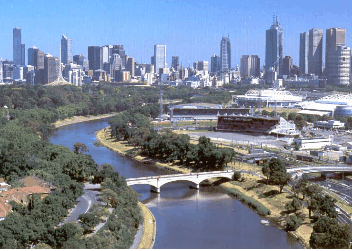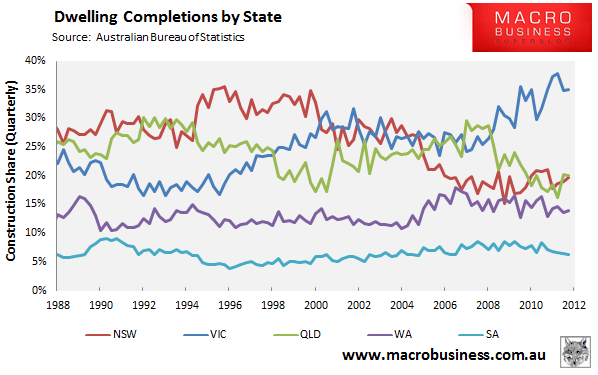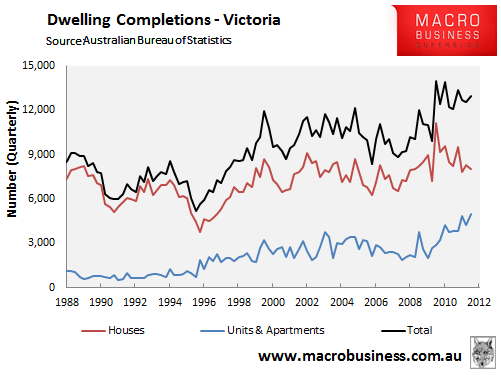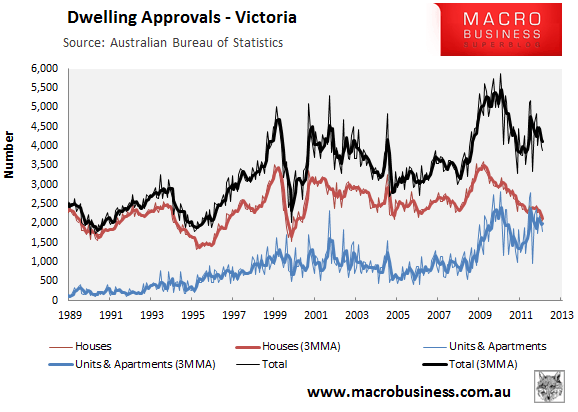
Earlier in the week, Houses and Holes reported how Victoria’s planning minister, Matthew Guy, had approved the monumental Australia 108 development, which would become the tallest tower in the Southern Hemisphere, and that Mr Guy had approved more than 17,000 apartments in 30 projects within the City of Melbourne since taking office in 2010.
Today, the AFR has revealed that the relentless pace of apartment approvals is unlikely to stop, with Mr Guy vowing to position Melbourne as the tallest skyline in Australia:
“Melbourne’s skyline will continue to dramatically change, compared to other cities . . . it will certainly consolidate its position as the tallest skyline in Australia,” Mr Guy told The Australian Financial Review.
“I view that with pride, because we are optimising our land use in our central city area. We’re not wasting our land . . . low-squat buildings in the CBD are wasteful”…
Mr Guy noted that over the past 30 years, Melbourne building heights had continued to grow and would increase, as the CBD was a high-density growth zone with scope for more skyscrapers.
“We’ve approved a number of buildings over 200 metres and will continue to do so,” he said…
Mr Guy has already approved $8 billion worth of development in the city since coming to power in 2010.
This financial year to date, he has ticked off $4.445 billion of commercial, office and residential development.
Most of the projects, which comprise 41 towers, are across the CBD, Southbank and Docklands, with some scattered in North Melbourne, West Melbourne and Carlton.
Mr Guy said Melbourne CBD was ripe for more high-rise development and had the investment interest and population growth to have the most tower-dominant skyline of all the capitals…
“Melbourne’s skyline will continue upwards in the next 10 years because I expect most of those projects to be built; a number of them are already moving forward,” he said.
As noted previously on MB, Victoria has dominated housing construction in recent years, accounting for 35% of the nation’s homes built across Australia since June-2010 (see next chart).

Much of this construction has been apartments, whose share increased to 38% in 2012 from around 26% over the prior decade (see next chart).

Apartment approvals – an indicator of future construction – have also boomed, increasing to 46% of total approvals in the year to January 2013 (see next chart).

Personally, I have no problem with Mr Guy’s actions. In approving a large number of apartments in the CBD, in addition to opening up fringe land supply and bringing forward Precinct Structure Plans, he will help in providing Melbournians with greater choice in housing, and should assist in improving housing affordability via placing downward pressure on prices and rents.
The broader concern is that with the manufacturing industry in terminal decline, the Victoria economy has become overly dependent on housing construction and population growth to drive the economy. Such an economic model only works as long as Melbourne keeps on building. But eventually, construction will necessarily slow, potentially leaving a large chunk of its workforce without jobs.

